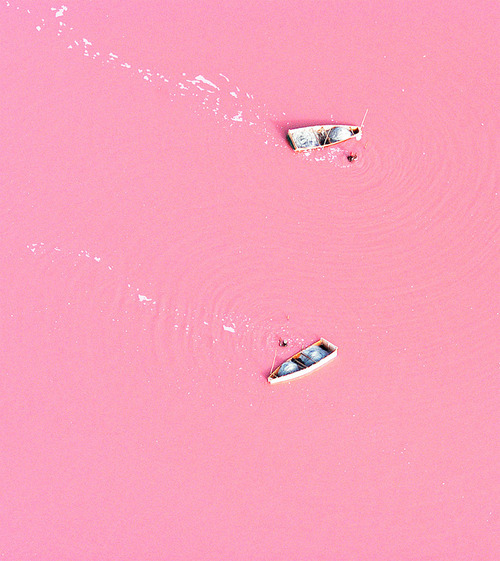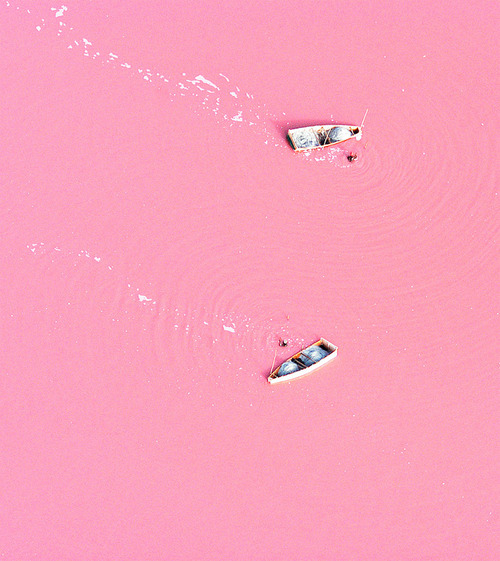
This is Lake Retba in Senegal, NOT the contents of your stomach when you drink too much Strawberry Quik and then have to chase it down with Pepto-Bismol and tiny boats. The lake itself is actually not in danger, but given that I just yelled “WHAT IN BLAZES?” and nearly dropped a cup of coffee on my dog, I’m still going to label this an environmental hazard.
The pink color comes from microorganisms called Dunaliella salina, which thrive in the extremely salty lake. The red pigment is D. salina‘s version of chlorophyll, allowing the organisms to collect energy from the sun. All of this is natural, if visually insane. Sometimes nature is easily as crazy-looking as human-made pollution.
Lake Retba is 40 percent salt in parts, and locals can make a living by collecting it — although they need to coat their bodies in butter before jumping in, to protect their skin from the extreme salinity. Or possibly D. salina is actually a bloodthirsty composite organism that thinks people taste like popcorn (i.e., better when buttered and salted). If Lake Retba salt-harvesters start getting a mysterious compulsion to cover themselves in brewer’s yeast, we’ll know.



